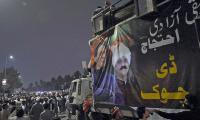The politics of fear led by President Trump attacking undocumented immigrants and religious minorities is pushing our political parties apart. Political divisions in the United States are increased when our two major political parties do not agree on what are the important issues.
Historically, Democratic and Republican parties essentially agreed on the important issues, but differed in the approach to dealing with them. There was still agreement about the top issues after President Obama was elected. In 2009, the electorate of both parties ranked terrorism, economy, and jobs among their top 5 priorities. Indeed, even 5 years ago, in 2014, the economy, jobs and social security were among the top 5 concerns of both parties.
The major separation occurred after President Trump’s election in 2016. Opinion poll data show that in 2019 Republicans prioritized fear issues – terrorism, immigration, and military – while Democrats focused more on institutional support issues such as health care, education, and the environment. These are significant differences, the one signaling concern with protection, safety and security, while the other is more future-oriented and enabling. Party members agree that things have changed recently. In 1987, only 25% of those surveyed said there was a great deal of difference between Republicans and Democrats. But by 2019, 54% gave this view.
This shift is largely due to the President’s weaponizing of fear, especially his rhetoric about murderous illegal immigrants and the pursuit of a multi-billion border wall to keep Americans safe, and keep his supporters fearful. Propaganda and false claims about immigrant criminality contribute to Republican supporters anger, but most anger is based on deep-seated fears, misinformation, and the more than 10,000 false and misleading statements by the president.
A constant discourse of fear – even if false – about pervasive immigrant crime, disease, and terrorism serve to keep Republican supporters on high fear-alert and direct their angst at the most popular threats. President Trump has skillfully directed the news cycle with tweets to keep people frightened and assuring them that he will protect them. Inflammatory tweets are repeated in regular news reports and amplified through social media, even if they are false. This shapes public opinion by emphasizing dangers – both real and imaginary – that his policies purport to fix, and that is the key: President Trump will save the people.
Sociologist Barry Glassner, an authority on the culture of fear, states: “His [Trump’s] formula is very clean and uncomplicated: Be very, very afraid. And I am the cure.” According to an Administration official, “The American people are afraid.” “That’s what the President’s reflecting.”
President Trump demonizes immigrants, Muslims, and Middle-Eastern minorities as potential terrorists, while also devaluing – and even insulting – journalists, scientists, progressive policies, allies, and treaties that promote programs, approaches, and values affirming various social service and government actions toward health care, education, human rights, international relations, and scientific consensus.
This has made Americans, and especially Republican backers, more afraid, and they focus on different issues than Democrats. And there are indications that many Republican supporters feel righteously entitled to pull further away from common issues. For example, in 2019, most Republicans (58%) wanted their party to move in an even more conservative direction, while 53% of Democratic voters preferred that their party should become more moderate. The differences in partisan world views has been noted by others:
“If you think the world is dangerous, safety is always the No 1 concern. When it comes to physical safety, letting your guard down against adversaries could be disastrous. If you think the world is safe, however, discriminating against groups that have generally been down the racial, gender, or sexual orientation hierarchy is the real sin.”
Courtesy: Counterpunch.org
Data, today, defines how we make decisions with tools allowing us to analyse experience more precisely
But if history has shown us anything, it is that rivals can eventually unite when stakes are high enough
Imagine a classroom where students are encouraged to question, and think deeply
Pakistan’s wheat farmers face unusually large pitfalls highlighting root cause of downward slide in agriculture
In agriculture, Pakistan moved up from 48th rank in year 2000 to an impressive ranking of 15th by year 2023
Born in Allahabad in 1943, Saeeda Gazdar migrated to Pakistan after Partition







